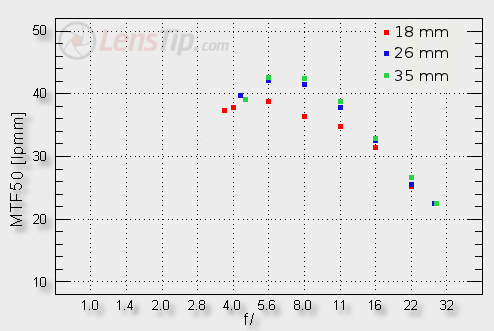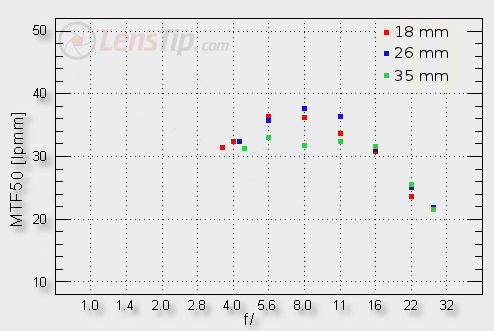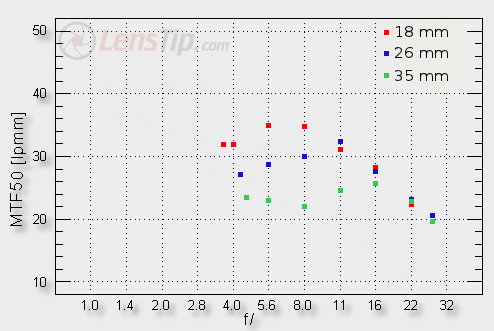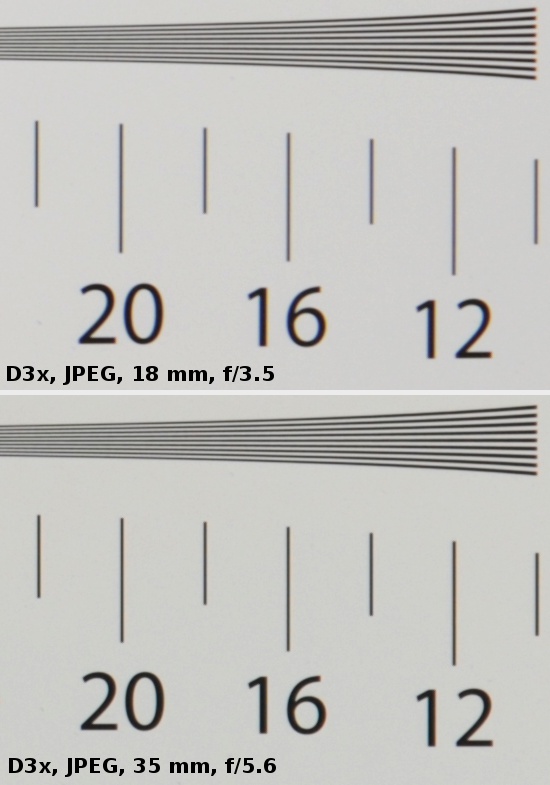Nikon Nikkor AF-S 18-35 mm f/3.5-4.5G ED
4. Image resolution
First let’s check how the tested lens fares in the middle of the frame.

Please Support UsIf you enjoy our reviews and articles, and you want us to continue our work please, support our website by donating through PayPal. The funds are going to be used for paying our editorial team, renting servers, and equipping our testing studio; only that way we will be able to continue providing you interesting content for free. |
- - - - - - - - - - - - - - - - - - - - - - - - - - - - - - - - - - - - - - - - - - - - - - - -
I have to admit its performance looks very nice. Already at the maximum relative aperture the MTFs are high (37-40 lpmm) so you can get images of high quality without any problem. Near the longer end of the focal range, on stopping down, the MTFs reach 42-43 lpmm – a very good level for a zoom lens. We are a bit worried by the fact that the shortest focal length lags behind the rest but even here it would be difficult to find any serious reasons to complain. The comparison with the Tokina 17-35 ends in a draw. The Tokina’s performance is more even as it fares better at the shortest focal length but its maximum results are a tad lower.
Let’s progress now to the description of the lens’s performance on the edge of the APS-C/DX sensor.

Here everything seems to be in perfect order as well. Already at the maximum relative aperture the images you get are fully useful; on stopping down, especially at the shorter end, they even become of good quality. This time the 35 mm focal length lags behind the rest visibly but it would be difficult to complain about it because the MTFs are still above the decency level.
The differences between particular focal lengths get noticeably larger on the edge of full frame as you can notice looking at the graph below.

It is pretty clear what the objectives of the optics constructors were when they designed the tested lens. Knowing that wide-angle devices are often used for taking landscape or architecture pictures, mainly at the widest angle possible, they focused their efforts on the widest angle exactly. They tried to ensure that, on stopping down to f/5.6-8.0, you get images as sharp as possible, with the sharpness area more or less evenly spread across the full frame sensor. You can say they succeeded. Unfortunately the longest focal length had to pay for it the steepest price – on the edge of full frame it is simply weak.
At the end of this chapter we present crops of our resolution testing chart, taken from JPEG files which we saved along RAW files used for the analysis above.
 |






